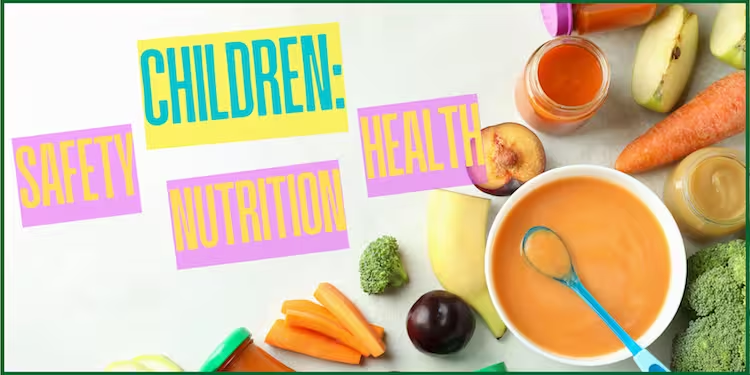The influence of health and nutrition on child safety is pivotal in fostering a nurturing environment for young ones to thrive. Ensuring the well-being of children is one of the top priorities for parents, caregivers, and communities.
This article profoundly explores these interconnected aspects, offering insights and practical advice to parents, guardians, and caregivers.
Table of Contents
- Understanding Child Safety
- Importance of Nutrition
- Health Maintenance
- Building Healthy Habits
Understanding Child Safety
Child safety encompasses a broad range of considerations, from physical safety in the home to emotional and psychological well-being.
Here are the key areas that require attention:
1. Home Environment
Creating a safe home environment is crucial, which includes:
- Childproofing Spaces: Secure cabinets with hazardous substances, keep sharp objects out of reach, and cover electrical outlets.
- Safe Sleeping Practices: Follow pediatrician-set guidelines to prevent Sudden Infant Death Syndrome (SIDS), such as placing babies on their backs to sleep and using a firm mattress.
2. Outdoor Safety
Children should also be safe outside the home. Important considerations include:
- Supervision: Always monitor children during playtime, particularly near streets, pools, or potentially dangerous areas.
- Helmet and Equipment Use: Encourage the use of helmets for biking and skating and ensure that playground equipment is well-maintained.
3. Internet Safety
In the digital age, internet safety is a growing concern:
- Parental Controls: Utilize parental control apps to monitor online activities and limit access to inappropriate material.
- Education: Teach children about online etiquette and the importance of keeping personal information private.
Importance of Nutrition
Proper nutrition is foundational to a child’s development, affecting physical health and cognitive function.
1. Balanced Diet
A well-rounded diet is crucial for growth and development; food safety and quality are essential to our everyday lives. Key components include:
- Fruits and Vegetables: Aim for various colors to ensure a range of nutrients.
- Whole Grains: Incorporate whole-grain bread, oatmeal, and brown rice for fiber and sustained energy.
- Proteins: Include lean meats, fish, legumes, and dairy for muscle health and growth.
2. Healthy Snacking
Snacking can often lead to unhealthy habits:
- Nutritious Options: Promote nutritious snacks like yogurt, nuts, and cut-up fruits instead of sugary treats.
- Portion Control: Teach children about appropriate portion sizes to prevent overeating.
3. Hydration
It’s important not to overlook proper hydration.:
- Water as the Primary Drink: Encourage water consumption over sugary drinks.
- Modeling Behavior: Parents should drink water regularly to set a positive example.
Health Maintenance
Routine health check-ups and preventive care are essential in promoting a child’s overall well-being.
1. Regular Check-Ups
Routine pediatric visits enable early detection of potential health concerns. These appointments usually include:
- Vaccinations: Keep vaccination schedules up to date to protect against preventable diseases.
- Growth Monitoring: Track height, weight, and developmental milestones to ensure children grow appropriately.
2. Mental Health Awareness
Mental health is as important as physical health:
- Open Communication: Foster an environment where children feel safe expressing their feelings.
- Signs of Trouble: Be aware of changes in behavior or mood that could signify mental health challenges.
Building Healthy Habits
Creating a lifestyle that promotes safety, nutrition, and health from a young age sets the foundation for lifelong habits. Here are some strategies:
1. Involvement in Meal Preparation
Involve children in grocery shopping and meal preparation is highly encouraging to teach kids about nutrition and encourage healthier eating habits.
2. Physical Activity
Encourage regular physical activity:
- Active Play: Schedule unstructured playtime where children can engage in physical activities.
- Family Activities: Participate in family-oriented physical activities like biking, hiking, or dancing.
3. Education and Awareness
Educate children about the importance of safety, nutrition, and health. Understanding the “why” behind healthy choices can empower them to make informed decisions as they grow.
Bottomline
Prioritizing child safety, nutrition, and health is an ongoing commitment that can profoundly affect a child’s development and quality of life.
Parents, guardians, and caregivers can help cultivate children’s safe and healthy environment by implementing robust safety measures, promoting balanced diets, and maintaining regular health checks.
Together, we can support the next generation in living their lives to the fullest—safely and healthily.
Do you enjoy this reading? Kindly share with family, friends, and colleagues. Thanks! 🙂



